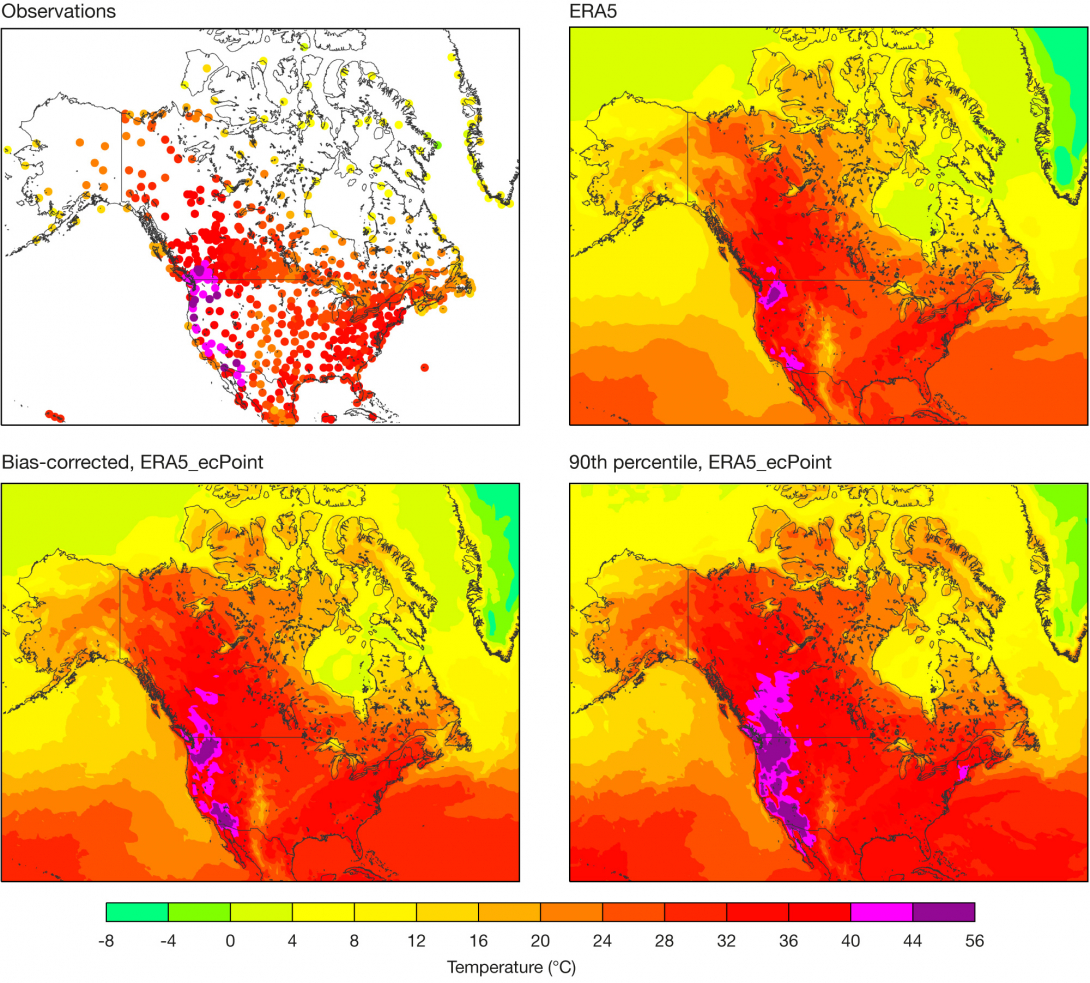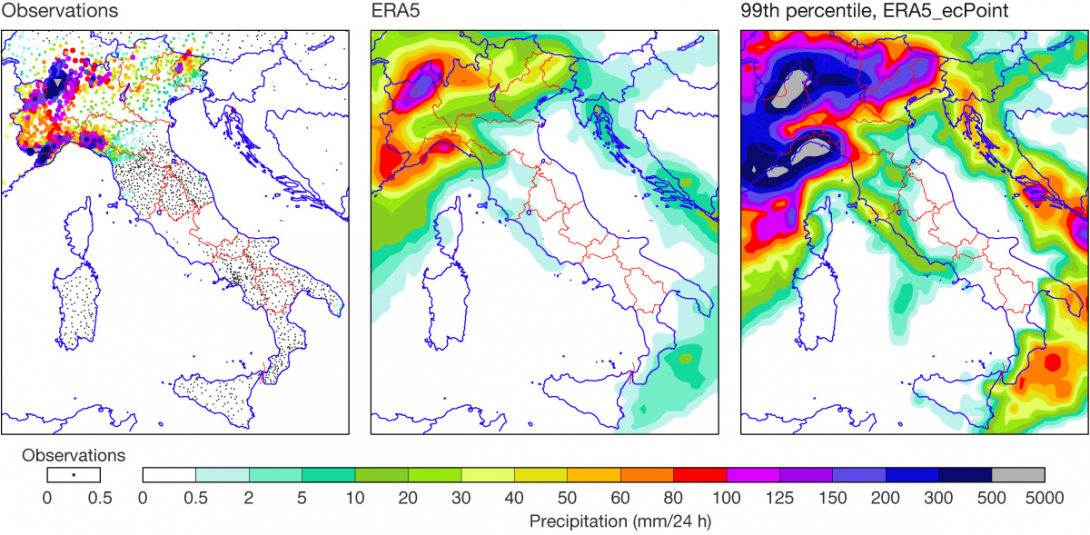Observation-based climatologies help detect trends and patterns in the climate over a long period of time and can contextualise extreme, high-impact weather events. However, observations can be inaccurate and are unevenly distributed in space and time. The ERA5 reanalysis, which is produced by the Copernicus Climate Change Service (C3S) run by ECMWF and is based on state‑of‑the‑art data assimilation and numerical weather prediction (NWP), provides an alternative: an accurate, temporally consistent, gridded estimate of the past state of the Earth system worldwide. However, this does not satisfy all needs due to ERA5’s relatively coarse model resolution, which precludes representation of localised extremes, and because of some intrinsic biases.
Within the Highlander project, co‑financed by the EU and coordinated by Italy’s Cineca computing centre, ECMWF’s ecPoint post-processing technique was applied to raw ERA5 ‘deterministic’ fields to address ERA5 limitations. ecPoint is formulated for independent application to any single model realisation and aims, in particular, to infer sub-grid variability and to correct biases (both according to ongoing weather and geographical scenarios). So in this way we create much more reliable (probabilistic) point-scale climatologies.
ERA5_ecPoint has so far been created for 1950 to 2021, for 24- and 12‑hourly rainfall, and 24 h minimum, maximum, and mean 2 m temperature. Two product classes were developed: grid-scale bias-corrected (‘deterministic’) and point-scale (probabilistic; percentiles 1 to 99). Currently provided on its native (reduced Gaussian) grid, with a spatial resolution of approximately 31 km (TL639), ERA5_ecPoint data should be added to the Copernicus Climate Data Store later this year. At present only an Italian cut-out region is accessible, through the Highlander data portal.
Example 1: Maximum 2‑metre temperatures during a heatwave over western North America in June 2021
Between late June and early July 2021, an extreme heatwave brought temperatures over 40°C to western parts of both Canada and the USA, causing billions of dollars in damage to agriculture, infrastructure, and the environment, and impacting people’s health. The most notable maximum temperature record was 49.6°C in Lytton, Canada, on 28 June.
Although raw ERA5 signalled extreme heat in western North America, it could not identify the full spatial extent or the extreme temperatures associated with the event. This is believed to be due mainly to unresolved local topographic details. So, whilst raw ERA5 captured well extreme temperatures in flatter areas such as the Columbia plateau in the north-western USA, in more mountainous regions it markedly underestimated them (e.g. giving 37°C for Lytton). Due to corrections specifically targeting areas with complex orography, the extent of very high temperatures in the bias-corrected ERA5_ecPoint matches observations more closely than does the raw ERA5. However, for an even better observation match one needs the probabilistic point-scale output. For example, the 90th percentile, which should be exceeded by 10% of observations, captured local extremes rather better (e.g. giving 48°C in Lytton). The first figure shows the results of applying ecPoint to ERA5 for 28 June.

Example 2: Extreme rainfall over Italy, 2 October 2020
In early October 2020, Storm Alex brought strong winds, heavy rain and thunderstorms to south-eastern France, northern Italy, and Central Europe, causing landslides and widespread severe flooding. Houses and infrastructure were very badly affected and there were 15 fatalities.
As in the temperature example, ERA5 rainfall output signalled extreme conditions, over north-western Italy for example, but did not capture local extrema. The highest values measured (around 600 mm/24 h) can be attributed to interactions between organised convection and the Alps. Raw ERA5 estimates for 2 October did not exceed 200 mm/24 h, likely due to convective parametrization limitations, sub-grid variability and biases related to topographic complexity. Meanwhile the ERA5_ecPoint 99th percentile peaked around 600 mm/24 h, because it targets factors such as these. The second figure shows the 99th percentile of ERA5_ecPoint for 2 October.

Summary and usage
ERA5_ecPoint nicely complements ERA5 for surface weather parameters, by correcting for biases and by providing probabilistic metrics. Whilst value should be added worldwide, users can benefit most where observations are lacking. ERA5_ecPoint also catalogues situation-dependent ERA5 grid-scale biases, and additionally it provides point-scale metrics to compare forecasts with, e.g. for rainfall warnings. Users will doubtless find other applications. Whilst further direct verification of ERA5_ecPoint is desirable, initial work indicates that the wet tails of station-based rainfall climatologies are well represented.
